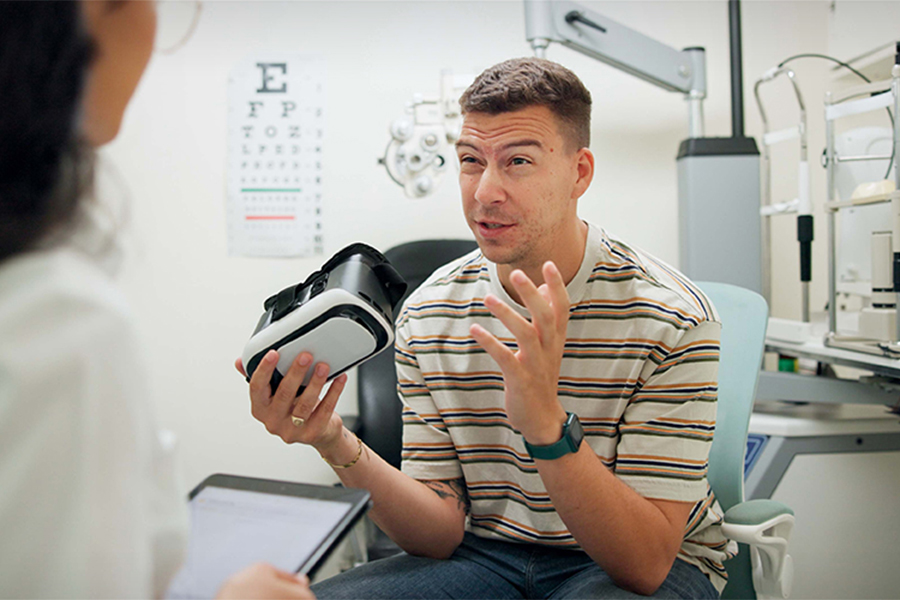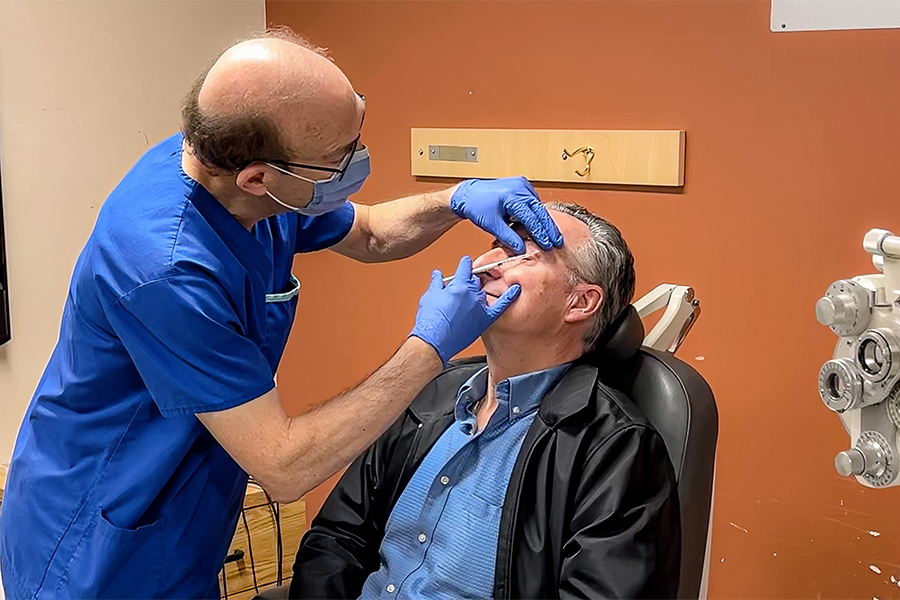
As classes begin this fall, many students may notice they’re struggling to see the front board and other study materials clearly. Common mild visual impairments, such as near or far-sightedness, can cause objects to appear blurry. This change in vision can be due to differences in the length of the eyeball, the thickness of the lens or the curve of the cornea – any of which can distort the image that appears on the retina, and travels to the vision area in the brain.
What sorts of symptoms can indicate a visual impairment and at what point should you reach out for help?
UHN Foundation spoke to Dr. Monica Daibert-Nido, the co-Director of the Low Vision Rehabilitation Clinic at the Donald K. Johnson Eye Institute at University Health Network. Dr. Daibert-Nido specializes in low vision rehabilitation in children and has changed the lives of many of her patients, some who are as young as four years old. Dr. Daibert-Nido provided some insights into what visual impairments can look like and where to go for additional information.
Q: How do I know if it’s an issue with my vision or the classroom board is just too far away?
The basic measurement of clear vision, also known as 20/20 vision, is the ability to clearly see an object 20 feet away. If you have near-sightedness or far-sightedness, this means your range of vision falls outside of this average and you can clearly see things which are either closer or farther, but not the other way around. For example, those who are near-sighted are able to see objects close up, but not further out in front.
If you’re struggling with your ability to see objects, the best way to confirm a visual impairment is having an eye test. But in the end, if something is too blurry, I still recommend moving closer to the board. Even if you don’t have a known visual impairment, you don’t want to strain your eye sight, which, in some cases, can lead to worsened eyesight.
Q: None of my family members use glasses or other visual aids, are you sure it’s a visual impairment?
There are many genes (your unique, hereditary code which your parents pass down to you) that influence the shape of the eye, cornea and lens – which can result in near and far-sighted vision. These genes can also lead to another mild visual impairment, known as an astigmatism, where the lens in your eye focuses the image on multiple points in your retina. Depending on how these genes present or interact, may result in you needing glasses compared to other family members.
Recent research has also noted that younger and younger children are needing glasses. This could be due to a number of environmental factors, such as an increase in screen time or a decrease in the amount of outdoor playtime.
Q: What sorts of symptoms should I watch for in myself or my child?
For more minor visual impairments like near or far-sightedness, you might experience blurry vision, headaches, tiredness while completing visual tasks or squinting of the eyes. Regardless of the symptoms, you should schedule an appointment with your eye doctor if you’re having issues with your vision. Also, make sure to check in with your child and schedule regular eye exams. Children may assume that blurred vision is how everyone sees the world and, as a result, they won’t communicate their symptoms.
If you experience severe eye pain or the loss of vision, either similar to a curtain sweeping across your field of view or on one side, you need to seek immediate medical attention as this is likely a more serious issue which can permanently impact your vision.
Q: What should I do if I got glasses, but they’re not helping?
Make sure to continue advocating for yourself and your health. Always take note of your quality of vision and if you suddenly have any symptoms. If your glasses, contacts, eye drops, eye surgery or laser therapy are not resolving the problem, talk to your vision care provider who would be able to refer you to a specialist.
For more information on eye health, vision illnesses and prevention, visit the Donald K. Johnson Eye Institute website.

No one ever changed the world on their own but when the bright minds at UHN work together with donors we can redefine the world of health care together.


